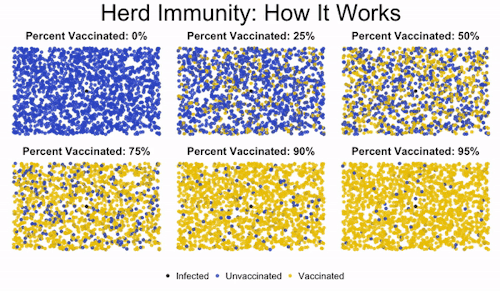Science-is-magical - Science Is Magic

More Posts from Science-is-magical and Others
I hate when people get all snobby like “uhm, humans didn’t EVOLVE from apes, humans and apes share a common ancestor”
Yeah well guess what shitlips, that common ancestor? an ape. By every taxonomical definition, it would be considered an ape.
.. I mean shit, by taxonomical definition, humans still are apes. They fall under the family Hominidae. We didn’t ditch that branch when we put pants on.

There’s Evidence of a New Ninth Planet. For real!
Caltech researchers have found evidence of a giant planet tracing a bizarre, highly elongated orbit in the outer solar system. The object, nicknamed Planet Nine, has a mass about 10 times that of Earth and orbits about 20 times farther from the sun on average than does Neptune, farthest planet from the Sun. In fact, it would take this new planet between 10,000 and 20,000 years to make just one full orbit around the sun.
Planetary scientists, Konstantin Batygin and Mike Brown, describe their work in the current issue of the Astronomical Journal and show how Planet Nine helps explain a number of mysterious features of the field of icy objects and debris beyond Neptune known as the Kuiper Belt.
Unlike the class of smaller objects now known as dwarf planets, Planet Nine gravitationally dominates its neighborhood of the solar system. In fact, it dominates a region larger than any of the other known planets.
Batygin and Brown predicted the planet’s existence through mathematical modeling and computer simulations but have not yet observed the object directly.
To put it briefly, Batygin and Brown inferred its presence from the peculiar clustering of six previously known objects that orbit beyond Neptune. They say there’s only a 0.007% chance that the clustering could be a coincidence. Instead, they say, a planet has shepherded the six objects into their strange elliptical orbits, tilted out of the plane of the solar system. It wasn’t the first possibility they investigated and they ran different simulations until finding that an anti-aligned orbit of the ninth planet prevents the Kuiper Belt objects from colliding with it and keeps them aligned. read more here
Diagram: The six most distant known objects in the solar system with orbits beyond Neptune (magenta) all mysteriously line up in a single direction. Also, when viewed in three dimensions, they all tilt nearly identically away from the plane of the solar system. A planet with in a distant eccentric orbit anti-aligned with the other six objects (orange) is required to maintain this configuration. The diagram was created using WorldWide Telescope. Credit: Caltech/R. Hurt (IPAC)







Better late than never!
Here’s a comic about Cosmic Strings!
https://www.space.com/9315-cracks-universe-physicists-search-cosmic-strings.html
https://www.sciencedaily.com/releases/2008/01/080120182315.htm

Redrawing the brain’s motor map
Neuroscientists at Emory have refined a map showing which parts of the brain are activated during head rotation, resolving a decades-old puzzle. Their findings may help in the study of movement disorders affecting the head and neck, such as cervical dystonia and head tremor.
The results were published in Journal of Neuroscience.
In landmark experiments published in the 1940s and 50s, Canadian neurosurgeon Wilder Penfield and colleagues determined which parts of the motor cortex controlled the movements of which parts of the body.
Penfield stimulated the brain with electricity in patients undergoing epilepsy surgery, and used the results to draw a “motor homunculus”: a distorted representation of the human body within the brain. Penfield assigned control of the neck muscles to a region between those that control the fingers and face, a finding inconsistent with some studies that came later.
Using modern functional MRI (magnetic resonance imaging), researchers at Emory University School of Medicine have shown that the neck’s motor control region in the brain is actually between the shoulders and trunk, a location that more closely matches the arrangement of the body itself.
“We can’t be that hard on Penfield, because the number of cases where he was able to study head movement was quite limited, and studying head motion as he did, by applying an electrode directly to the brain, creates some challenges,” says lead author Buz Jinnah, MD, professor of neurology, human genetics and pediatrics at Emory University School of Medicine.
The new location for the neck muscles makes more sense, because it corresponds to a similar map Penfield established of the sense of touch (the somatosensory cortex), Jinnah says.
Participants in brain imaging studies need to keep their heads still to provide accurate data, so volunteers were asked to perform isometric muscle contraction. They attempted to rotate their heads to the left or the right, even though head movement was restricted by foam padding and restraining straps.
First author Cecilia Prudente, a graduate student in neuroscience who is now a postdoctoral associate at the University of Minnesota, developed the isometric head movement task and obtained internal funding that allowed the study to proceed.
She and Jinnah knew that isometric exercises for the wrist activated the same regions of the motor cortex as wrist movements, and used that as a reference point in their study. During brain imaging, they were able to check that particular muscles were being tensed by directly monitoring volunteers’ muscles electronically.
When volunteers contracted their neck muscles, researchers were able to detect activation in other parts of the brain too, such as the cerebellum and the basal ganglia, which are known to be involved in movement control. This comes as no surprise, Jinnah says, since these regions also control movements of the hands and other body parts.
Prudente, Jinnah and colleagues have conducted a similar study with cervical dystonia patients, with the goal of comparing the patterns of brain activation between healthy volunteers and the patients. Cervical dystonia is a painful condition in which the neck muscles contract involuntarily and the head posture is distorted.
“These results may help guide future studies in humans and animals, as well as medical or surgical interventions for cervical dystonia and other disorders involving abnormal head movements,” Prudente says.

Herd immunity is the idea that if enough people get immunized against a disease, they’ll create protection for even those who aren’t vaccinated. This is important to protect those who can’t get vaccinated, like immunocompromised children.
You can see in the image how low levels of vaccination lead to everyone getting infected. Medium levels slow down the progression of the illness, but they don’t offer robust protection to the unvaccinated. But once you read a high enough level of vaccination, the disease gets effectively road-blocked. It can’t spread fast enough because it encounters too many vaccinated individuals, and so the majority of the population (even the unvaccinated people) are protected.
Find out more here.
why do we have butt cheeks i dont understand why did we evolve this way
what use do butt cheeks have

“Surface tension dictates the spherical cap shape of small sessile drops, whereas gravity flattens larger drops into millimeter-thick flat puddles. In contrast with drops, soap bubbles remain spherical at much larger sizes. However, we demonstrate experimentally and theoretically that meter-sized bubbles also flatten under their weight, and we compute their shapes. We find that mechanics does not impose a maximum height for large soap bubbles, but, in practice, the physicochemical properties of surfactants limit the access to this self-similar regime where the height grows as the radius to the power 2/3. An exact analogy shows that the shape of giant soap bubbles is nevertheless realized by large inflatable structures.” Via.
-
 wildernestt reblogged this · 1 month ago
wildernestt reblogged this · 1 month ago -
 wildernestt liked this · 1 month ago
wildernestt liked this · 1 month ago -
 lesbianwerewolf reblogged this · 9 months ago
lesbianwerewolf reblogged this · 9 months ago -
 likedpostlibrary reblogged this · 1 year ago
likedpostlibrary reblogged this · 1 year ago -
 ameliamircalla reblogged this · 1 year ago
ameliamircalla reblogged this · 1 year ago -
 ameliamircalla liked this · 1 year ago
ameliamircalla liked this · 1 year ago -
 jasderp liked this · 1 year ago
jasderp liked this · 1 year ago -
 torreybv liked this · 1 year ago
torreybv liked this · 1 year ago -
 spain reblogged this · 1 year ago
spain reblogged this · 1 year ago -
 anracli reblogged this · 1 year ago
anracli reblogged this · 1 year ago -
 pansethbrundle liked this · 1 year ago
pansethbrundle liked this · 1 year ago -
 zombinaandthesodomites liked this · 2 years ago
zombinaandthesodomites liked this · 2 years ago -
 askmissyandco liked this · 2 years ago
askmissyandco liked this · 2 years ago -
 theadrenalinator9000 reblogged this · 2 years ago
theadrenalinator9000 reblogged this · 2 years ago -
 oldmanontumbler liked this · 2 years ago
oldmanontumbler liked this · 2 years ago -
 milkregular liked this · 2 years ago
milkregular liked this · 2 years ago -
 outlaw-monarch reblogged this · 2 years ago
outlaw-monarch reblogged this · 2 years ago -
 outlaw-monarch liked this · 2 years ago
outlaw-monarch liked this · 2 years ago -
 archive940901 reblogged this · 2 years ago
archive940901 reblogged this · 2 years ago -
 ledionakajmaku07 liked this · 2 years ago
ledionakajmaku07 liked this · 2 years ago -
 transgendz reblogged this · 3 years ago
transgendz reblogged this · 3 years ago -
 solnitsata reblogged this · 3 years ago
solnitsata reblogged this · 3 years ago -
 whyamidoingthis-imdone reblogged this · 3 years ago
whyamidoingthis-imdone reblogged this · 3 years ago -
 kelsbraintumbler liked this · 3 years ago
kelsbraintumbler liked this · 3 years ago -
 whyamidoingthis-imdone liked this · 3 years ago
whyamidoingthis-imdone liked this · 3 years ago -
 thearbiterthel liked this · 3 years ago
thearbiterthel liked this · 3 years ago -
 vaguely-none liked this · 3 years ago
vaguely-none liked this · 3 years ago -
 existentialterror liked this · 3 years ago
existentialterror liked this · 3 years ago -
 krinsbez reblogged this · 3 years ago
krinsbez reblogged this · 3 years ago -
 krinsbez liked this · 3 years ago
krinsbez liked this · 3 years ago -
 risingape reblogged this · 3 years ago
risingape reblogged this · 3 years ago -
 cybergraveyard reblogged this · 3 years ago
cybergraveyard reblogged this · 3 years ago -
 cybergraveyard liked this · 3 years ago
cybergraveyard liked this · 3 years ago -
 b4midn8 liked this · 3 years ago
b4midn8 liked this · 3 years ago -
 darlingoflumberland liked this · 3 years ago
darlingoflumberland liked this · 3 years ago -
 earthandsunandmoon reblogged this · 3 years ago
earthandsunandmoon reblogged this · 3 years ago











